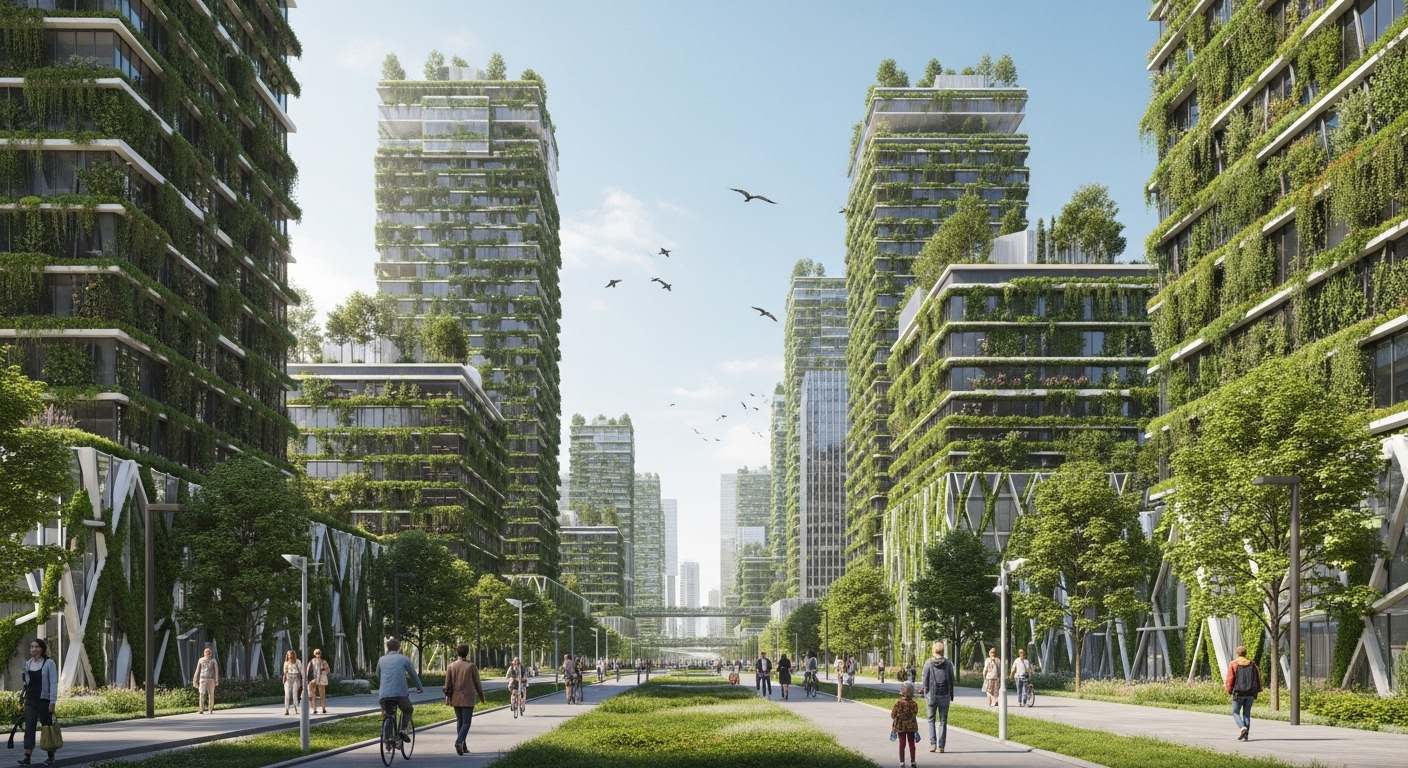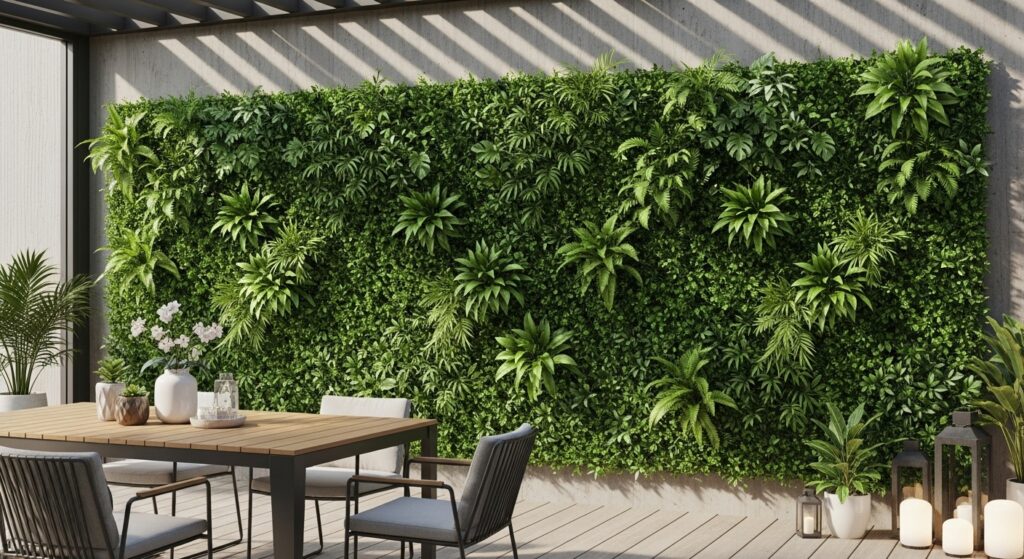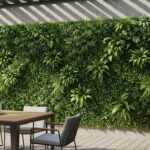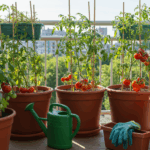Introduction to the Vertical Garden Wall Concept
Have you ever wondered how urban spaces can invite nature into their midst without sacrificing valuable real estate?
The concept of the vertical garden wall, also known as a living wall or green wall, provides an innovative solution to this modern dilemma.
These vertical plantations not only add aesthetic value to urban buildings but also offer environmental benefits, making them increasingly popular in both residential and commercial settings.
The integration of vertical garden walls represents a shift towards sustainable architecture and urban design.
As urban areas continue to expand, the need for green spaces becomes more pressing, and these living walls offer a practical answer.
By harnessing the potential of vertical surfaces, architects and designers can transform concrete jungles into lush, green environments without occupying the precious horizontal space that is often limited in cities.
Understanding the Mechanics of Vertical Garden Walls
To comprehend the true potential of vertical garden walls, one must first understand how they function.
Essentially, these structures support various plant species on vertical panels using a framework that houses a growth medium and an irrigation system.
The framework can be attached to existing walls or built as a freestanding unit, allowing for flexibility in design and installation.
Different plants can be used, depending on the desired aesthetic and environmental objectives.
| Component | Function | Example |
|---|---|---|
| Framework | Provides support structure | Metal grid |
| Growth Medium | Nourishes plants | Soil or hydroponic solution |
| Irrigation System | Supplies water | Drip or mist system |
| Plants | Green aesthetic and benefits | Ferns, flowers |
The effectiveness of a vertical garden wall largely depends on the interplay of these components.
The choice of plants is crucial, as it determines not only the visual output but also how the wall contributes to air quality, biodiversity, and microclimate regulation.
Design Considerations for Vertical Garden Walls
When designing a vertical garden wall, several considerations must be addressed to ensure the project’s success.
Location plays a pivotal role, as sunlight exposure, wind patterns, and the building’s structure can influence plant selection and maintenance needs.
Designers must assess these environmental factors to determine the most suitable plant species and irrigation requirements.
The integration of these elements must also consider the desired outcome of the green wall. Is the primary goal aesthetic enhancement, environmental sustainability, or perhaps both?
Once these objectives are clear, the subsequent steps involve detailed planning and sourcing of plant materials, ensuring that the chosen species will thrive in their vertical orientation.
“A garden requires patient labor and attention. Plants do not grow merely to satisfy ambitions or to fulfill good intentions. They thrive because someone expended effort on them.” — Liberty Hyde Bailey

Applications of Vertical Garden Walls
Vertical garden walls have found applications across various sectors, from residential buildings to corporate offices and public spaces.
In residential settings, these walls can enhance privacy by acting as natural partitions, while also improving air quality within the home.
In commercial spaces, green walls often serve as iconic features that elevate brand image and employee morale.
- 1- Residential buildings benefit from vertical gardens by improving air quality.
- 2- Office spaces incorporate green walls for aesthetic and productivity benefits.
- 3- Public areas use vertical gardens to promote biodiversity and community well-being.
By strategically integrating vertical garden walls into these environments, users can experience both aesthetic pleasure and practical benefits, fostering a more sustainable and healthy lifestyle.
Environmental Benefits of Vertical Gardens
The environmental benefits of vertical gardens are multifaceted. Firstly, they play a significant role in air purification, as plants absorb carbon dioxide and release oxygen, thus improving indoor and outdoor air quality.
Moreover, these walls are instrumental in urban heat island mitigation by providing natural insulation, which reduces the need for air conditioning and lowers energy consumption.
Vertical gardens also support biodiversity by creating habitats for various flora and fauna, especially in urban areas where natural ecosystems are limited.
These green spaces encourage the presence of beneficial insects and birds, promoting ecological balance and bolstering biodiversity.
By incorporating vertical garden walls, urban areas can thus contribute to the preservation and restoration of natural environments.
Challenges and Maintenance of Vertical Garden Walls
Despite their many benefits, vertical garden walls present certain challenges that need to be addressed for their optimal performance.
Maintenance is perhaps the most significant among these challenges, as the plants require regular care to ensure their health.
Depending on the plant species and location, varying levels of maintenance will be necessary, involving irrigation, trimming, and pest control.
In addition, the initial cost and complexity of installation may pose barriers to widespread adoption.
However, these can often be offset by the long-term savings brought about by reduced energy costs and increased property value.
As technologies and materials improve, these challenges are likely to diminish, making vertical garden walls more accessible to a broader audience.
Case Studies: Successful Vertical Garden Implementations
Several prominent case studies highlight the successful implementation of vertical garden walls, demonstrating their transformative potential.
One such example is the CaixaForum in Madrid, a cultural center renowned for its striking vertical garden facade.
Designed by botanist Patrick Blanc, this living wall is a testament to the power of botanical art, drawing visitors from around the world.
Another notable instance is the Bosco Verticale in Milan, comprising two residential towers adorned with biodiversity-rich vertical gardens.
These towers not only redefine the city skyline but also create a natural ecosystem, improving air quality and reducing noise pollution.
Such successful applications showcase how vertical gardens can seamlessly blend innovation with nature, setting a precedent for future urban developments.

The Future of Vertical Gardens
The future of vertical gardens appears promising, as advancements in materials, technology, and design open new possibilities for expansion and innovation.
As climate change and urbanization continue to challenge sustainable living, vertical garden walls offer a viable solution that addresses multiple issues simultaneously.
Their adoption is anticipated to grow, driven by increased awareness of environmental issues and a desire for greener, healthier urban spaces.
Technological advancements, particularly in hydroponic systems and plant cultivation techniques, will likely facilitate more complex and efficient vertical garden designs.
These improvements will enhance plant resilience and reduce maintenance needs, further encouraging their integration into urban environments.
As a hybrid between architecture and ecology, vertical garden walls symbolize a forward-thinking approach to sustainable design.
Social and Health Impacts of Vertical Gardens
Vertical garden walls also boast social and health-related benefits, contributing to the overall well-being of individuals and communities.
By introducing greenery into urban areas, these walls can reduce stress and promote a sense of calm, offering a much-needed respite from the hustle and bustle of city life.
Studies have shown that exposure to greenery can improve mental health, boost mood, and enhance focus and productivity.
Community gardens and shared green spaces, facilitated by vertical gardens, foster social interaction and community engagement.
These spaces encourage people to come together, share resources, and collaborate on environmental projects, nurturing a sense of community ownership and responsibility.
As such, vertical garden walls have the potential to not only transform physical spaces but also to enrich social dynamics.
FAQ – Common Questions
What is a vertical garden wall?
A vertical garden wall, also known as a living wall or green wall, is a structure that supports a variety of plant species on vertical surfaces, often incorporating frameworks, growth mediums, and irrigation systems.
What are the benefits of vertical garden walls?
Vertical garden walls offer numerous benefits, including aesthetic enhancement, air purification, biodiversity support, microclimate regulation, and stress reduction.
How do vertical garden walls contribute to energy savings?
These walls provide natural insulation by absorbing sunlight and reducing heat absorption, leading to decreased reliance on air conditioning and lower energy consumption.
What maintenance do vertical garden walls require?
Vertical garden walls require regular maintenance, including irrigation, trimming, and pest control, depending on the plant species and environmental conditions.
Can vertical garden walls be installed indoors as well?
Yes, vertical garden walls can be installed indoors and are often used to enhance interior aesthetics, improve air quality, and promote well-being.
Conclusion
The vertical garden wall represents a remarkable convergence of nature and architecture, offering a sustainable solution to the challenges of modern urban living.
By transforming vertical surfaces into lush, verdant landscapes, these living walls have the potential to revitalize cities, enhance environmental quality, and improve the well-being of urban dwellers.
As cities continue to evolve, the adoption of such innovative green solutions becomes imperative, paving the way for a future where nature and urbanization coexist harmoniously.







